Cucurbitaceae: [Concept, Characteristics and Examples]
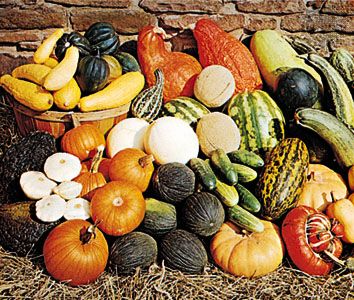
What are cucurbits?
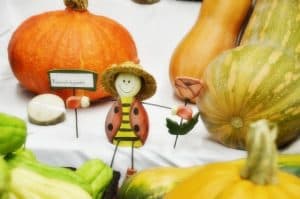 In the world of Cucurbitaceae or Cucurbitaceae, many plant species are included, mostly of tropical origin such as fruits, vegetables and legumes that serve as food for humanity and many herbivorous animals.
In the world of Cucurbitaceae or Cucurbitaceae, many plant species are included, mostly of tropical origin such as fruits, vegetables and legumes that serve as food for humanity and many herbivorous animals.
They are typically climbers.
This means that they are of immeasurable strategic value for the survival of the different species of life that populate the different ecosystems of the Earth.
They come from the youngest regions of the planet, in the so-called tropical and subtropical climate zone and it is very rare when any species is cultivated and thrives in cold or temperate zones.
However, there are species that have managed to migrate to the European continent to live in cool temperatures, as long as they are kept at temperatures that are not below 15ºC.
What characteristics do cucurbits have?
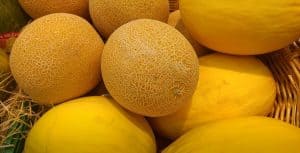 They are mostly annual plants or geophytes, which have a creeping habit, with the presence of tendrils, some of which are guiding.
They are mostly annual plants or geophytes, which have a creeping habit, with the presence of tendrils, some of which are guiding.
These varieties almost always have divided, simple and alternate leaves . Many are mostly heart-shaped and have membranous branches, without the presence of stipules.
These plants can take up a lot of physical space, but they are usually easy to grow, since they can be planted in nurseries and on fertile land.
Did you know…?Its main characteristic lies in the production of a combination of substances of chemical origin called cucurbitacins, concentrated mainly in the roots and fruits, whose greatest achievement is to cause the vegetative parts and the unripened fruits to have a very bitter taste and sometimes even toxic, which repels the action of animals interested in eating ahead of time.
Cucurbitacins can also be present in stems and leaves and due to their bitter taste, biologists believe that they are involved in a perfect defense mechanism of plants against herbivory or the predatory relationship that exists between animals and plants.
The reproduction of cucurbits
Their reproduction: they usually have hermaphroditic flowers or of both sexes, but there are also unisexual plants, in inflorescences, solitary and regular.
And fertilized by insects.
Vegetative structures of cucurbits
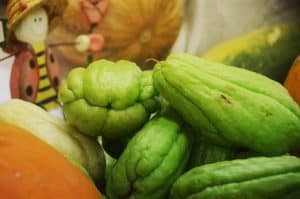 They have other distinctive vegetative structures such as a gamosépalous-type calyx and a rotaceous, funnel-shaped or gamopetalous-type corolla that exhibits very marked lobes, always sprouting yellow, white, and green.
They have other distinctive vegetative structures such as a gamosépalous-type calyx and a rotaceous, funnel-shaped or gamopetalous-type corolla that exhibits very marked lobes, always sprouting yellow, white, and green.
Its stamens are free and grouped in three, as well as individual antennae, free and gathered in the shape of a Pumpkin.
The ovary of the plant is usually three-skinned with placentas attached at the so-called ovary axis.
Its fruit varies greatly in size, shape and consistency of the pulp.
The seeds are always very numerous, they appear by the thousands, but they can also appear individually, that is, one for each fruit on the plant.
In short, they have the following characteristics:
- They are easy to grow.
- They are grouped into about 700 species.
- They need a large amount of space to develop.
- They have male and female flowers.
- They are fertilized with the vital help of insects (pollination).
- They have flowers usually heart-shaped, with bright colors.
- Most of the species are sown through nurseries, although they also germinate directly on fertile land.
What are the most famous cucurbits?
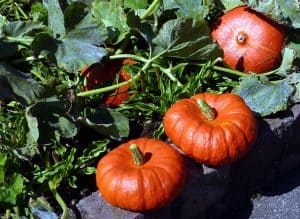 Curiously, there are legumes, fruits and vegetables tied to the same family: cucurbits, which have always been part of our food and culinary culture in many countries.
Curiously, there are legumes, fruits and vegetables tied to the same family: cucurbits, which have always been part of our food and culinary culture in many countries.
That is why they are so popular around the world, because they enter the homes of billions of people every day to satisfy the most varied nutritional needs, and also whims to delight the palate.
Now let’s see, in a brief review, some of the best known cucurbits.
Pumpkin
 It is easy to grow in home and school gardens.
It is easy to grow in home and school gardens.
Although it takes up a lot of space, it is convenient to place it on the sides or, better yet, near a fence and gate where it can climb comfortably.
- Sowing: In the middle of winter, it is grown in seedbeds and transplanted in the spring , leaving a space between 1-2 meters between plants.
- Development: They have leaves of great growth, a creeping stem that expands several meters that have tendrils that help them cling to the ground and climb walls.
- Flowers: It has both sexes and is fertilized by insects, especially bees. This allows varieties to be crossed.
- Fruits: There are varieties of distinctive appearance, with differences in size, flavor, widely used in the preparation of soups, creams and purées.
cucumbers
 Cucumbers are also a vegetable that is very easy to care for in a garden and is part of salads, beverages with energizing powers and is even widely used in masks in the cosmetic industry for facial beautification purposes.
Cucumbers are also a vegetable that is very easy to care for in a garden and is part of salads, beverages with energizing powers and is even widely used in masks in the cosmetic industry for facial beautification purposes.
It is a natural source of antioxidants and essential nutrients such as vitamins and minerals.
- Sowing: In mid- winter, we can grow this plant in seedbeds that will be ready in spring to be transplanted to a medium-sized garden, because each plant should have an approximate separation between 50 cm and 1 meter.
- Development: Like many other plant species, the cucumber has a creeping growth behavior, although its stem is guided by a cane until it reaches an estimated height of about 2 meters, with the aim of making its fruits hang, in case that the cultivation space is small, insufficient.
- Flowers: They areyellowwith 5 showy petals and the plant has flowers of both sexes. Likewise, it is pollinated with the help of insects.
- Fruits: Among the varieties, gherkins and cucumbers are highly appreciated in gastronomy , which can be harvested at the beginning of June, in the middle of each year.
Cantaloupe
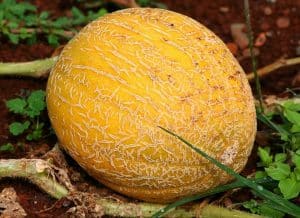 The melon is one of the most refreshing fruits that is harvested in summer, when its development reaches its maximum splendor. It also needs a privileged space in the garden or land.
The melon is one of the most refreshing fruits that is harvested in summer, when its development reaches its maximum splendor. It also needs a privileged space in the garden or land.
It is part of juices, juices, desserts and salads. It has a lot of water, sugar and vitamins
- Sowing: In nurseries, its seeds thrive and should always be planted in the garden in early spring, with a separation of approximately 1 meter between each seedling.
- Development: Its growth is of the creeping type, close to the ground but with a great capacity to spread everywhere, so it can be driven with the help of a guide and leave it in full freedom of movement. It has the advantage of ridding the soil of weeds .
- Flowers: They are small yellow flowers, with female and male sex. An insect fulfills the mission of causing fertilization, so it is very easy to combine several varieties to achieve improvements in the quality of the fruits.
- Fruits: They ripen with striking beauty on the plant itself, in the midst of its climbing branches . The yellow variety is the smallest, but sometimes they come in amazing sizes.
Zucchini
 Zucchini is another vegetable of great nobility that is present in many dishes in the kitchen. It is easily grown in family gardens, because it does not require very demanding care.
Zucchini is another vegetable of great nobility that is present in many dishes in the kitchen. It is easily grown in family gardens, because it does not require very demanding care.
- Sowing: In mid- winter, the seedbed is cultivated in a protected environment and then transplanted late in the spring, always keeping an approximate distance of 100 cm between each plant.
- Development: It has quite elongated stems and its leaves are spectacularly large. It must receive a lot of irrigation water and it is necessary to always remove the weeds to prevent them from stealing nutrients, as well as leaves and fruits that dry out.
- Flowers: The zucchini gives us a simply spectacular yellow flower with huge petals, but it needs a good space in the garden to be able to grow to its fullest.
- Its flowers are male, with a very elongated peduncle and there are also female ones, with a short peduncle. They are fertilized by visiting insects attracted by the nectar, especially bees, a practice that allows the crossbreeding of pollens from different plants to obtain new varieties.
- Fruits: Fruits should be harvested before they are fully ripe to prevent damage in the ground. They should always be harvested when they are tender, in mid-June and until September of each year, if the production of this very generous plant has been extended.
Watermelon
 Watermelon is a fruit – bearing plant that also generates very good results in family and school gardens. It gives a very appetizing harvest, given the high refreshing power of its fruit, ideal to withstand the summer heat.
Watermelon is a fruit – bearing plant that also generates very good results in family and school gardens. It gives a very appetizing harvest, given the high refreshing power of its fruit, ideal to withstand the summer heat.
It is an active part of juices, juices, but it is best to eat it alone to keep us hydrated in summer, because it has a high water content and a source of fructose or natural sugar.
- Sowing: Using seedbeds is appropriate to achieve a healthy multiplication of plants, but they must be prepared in the garden at the beginning of spring, if a positive result is desired. A meter between each plant is the most prudent distance to allow excellent growth and development.
- Development: It is another plant with creeping growth with long stems that can be controlled with a guide, although it is better to leave it free to develop, as it prevents the proliferation of weeds.
- Flowers: They sprout small flowers that invade the plant of an intense yellow color with 5 very shiny petals. Like many other species of the same family, it has male and female flowers and its fertilization occurs thanks to the intervention of insects in love with the aroma of floral nectar.
- Fruits: This plant gives us two types of fruits: smooth and striped. They must be left to mature on the plant and harvested between August and September of each year.
Diseases that attack cucurbits
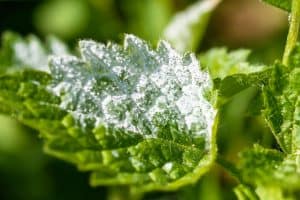 A wide range of cucurbit diseases can affect these plants at different stages of growth.
A wide range of cucurbit diseases can affect these plants at different stages of growth.
Fungi and bacteria can cause wilting, rot, and pests. It is important to first diagnose the disease before attempting treatment. Proper feeding and drip irrigation schedules help keep plants healthy and disease at bay.
A good solution against fungi is usually the preparation of homemade fungicides or potassium soap.
If you need specific information about cucurbit plants, it is best to consult a specialist or a local nursery. Usually, a horticultural specialist can help you deal with any possible pests or diseases on the crop and recommend an effective solution.

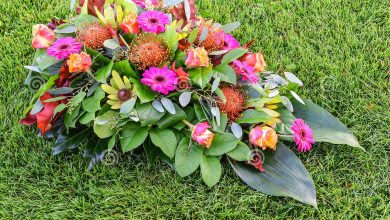
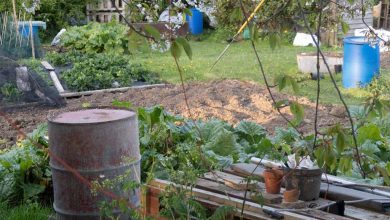
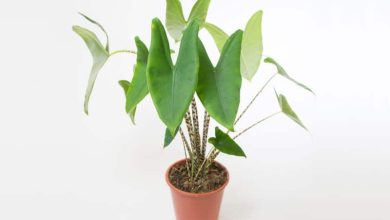
![Photo of White Mold in your Garden: [Identify, Prevent and Treat]](https://www.complete-gardening.com/wp-content/uploads/2022/08/white-mold-in-your-garden-identify-prevent-and-treat-390x220.jpg)